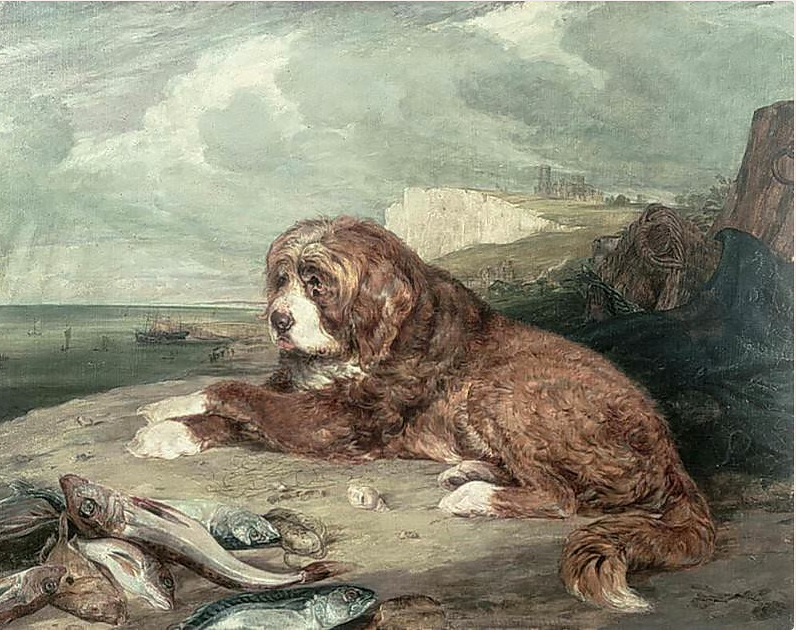 An Old Newfoundland Dog Guarding the Catch
An Old Newfoundland Dog Guarding the Catch (c. 1822)
by
John Frederick Lewis
Lewis (1804 - 1876), who came from a large family of artists and engravers, was an English painter known primarily for his "Orientalist" paintings, though he worked in a number of genres and began his artistic career as an animal painter, having been trained alongside his friend Edwin Landseer in the studio of Sir Thomas Lawrence. Even in his later work Lewis was known to frequently include animals. He traveled widely, and his depictions of life in various countries around the world earned him both critical and commercial success; he often painted two versions of the same scene, one in watercolor and the other in oil, as oil paintings were more profitable. [ more on Lewis ]
This work was a commission by Charles Biggs Calmady (d. 1855), a wealthy landowner who apparently devoted most of his adult life to playing cricket and having portraits made of his children and dogs, usually by top-tier artists. Sir Thomas Lawrence, widely regarded as one of the greatest portrait painters ever, painted a double portrait of Calmady's two oldest daughters, a painting which Lawrence regarded as one of the best he ever did.
There are two preliminary versions of this work in existence. The first is a watercolor over pencil:
This sketch is in the Royal Academy; their website description of the work is as follows: "A moping mutt keeps watch over the day’s catch, the fish lying nearby on the sand. John Frederick Lewis made this preparatory sketch for a painting commissioned by a wealthy patron. The dog is a Newfoundland, a breed popular among elite social circles in the early 19th century. Let’s just hope he’s been a good boy and gets a share of the fish – that’d give him a waggly tail!"
The second is pencil and black and white chalk on paper:
Both of these images are courtey of the Royal Academy.



